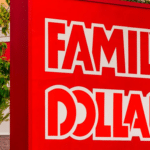
During inflationary times, having a price point in the name of your store is proving to be a risky proposition – one that two discount retailers are navigating very differently. Five Below is recommitting to its name by pledging to sell more items at $5 and below again, while Dollar Tree is actively working to leave its onetime “everything’s a dollar” pledge even further in its rearview mirror.
It was back in July when Gordon Haskett Research Advisors sent a note to its investor clients, saying that Five Below’s sales performance suggested its decision to offer a selection of items priced above its $5 “sweet spot a few years ago may have been a mistake,” and that returning to its roots of offering items priced only at $5 and below “might be the answer.”
Fast forward to a couple of weeks ago, and Five Below executives announced “a refocus of the business,” with a renewed emphasis on – you guessed it – items priced at $5 and below.
“We’re going to be introducing and refocusing on those lower price points, $1, $3, $5,” the company’s interim President and CEO Ken Bull told investors. “It’s going to be the reintroduction of those key price points for our customer… It gets back to value.”
“Five Below is all about extreme value,” Five Below’s founder and interim Executive Chairman Tom Vellios echoed. “We think price points in the $1 to $5 price point are very important, especially for our core customers, especially for mom and dad and kids coming into our stores.”
That’s a different philosophy than Five Below expressed five years ago, when it began testing prices above $5 for the first time since its 2002 founding. Some prices inched up to $5.25 or $5.55 to help cover Five Below’s own higher costs, while stores also introduced a selection of higher-end “Five Beyond” items priced at up to $10. “The majority of the items will be $5 to $10,” the retailer’s then-CEO said. “But there is the opportunity to push that even further.”
But with inflation causing shoppers to rethink their spending, Five Below may have pushed it too far. “Over the past few years, we lost some of that sharp focus on our core customers,” Vellios acknowledged. So going forward, “we will lead with value,” Bull added, “amplifying the price points that are most impactful for our core customer.” Five Below will still offer a selection of higher-priced items that it otherwise couldn’t afford to sell for just $5, but they will make up a smaller proportion of the overall inventory. “We still believe in the Five Beyond product at the end of the day,” Bull explained, “but we also realize that we’re in a position where we need to restrategize.”
Contrast this strategy with Dollar Tree’s. The dollar store chain reported disappointing sales and earnings figures last week, as “we started to see inflation, interest rates, and other macro pressures have a more pronounced impact on the buying behavior” of shoppers, Dollar Tree Chief Operating Officer Mike Creedon told investors.
Could that signal some pushback to Dollar Tree’s higher prices? At about the same time as Five Below began offering “Five Beyond” products, Dollar Tree began offering higher-end “Dollar Tree Plus” products priced at up to $5. A hike in Dollar Tree’s base price point, from one dollar to $1.25, soon followed.
So surely, Dollar Tree will do as Five Beyond is doing, by recommitting to the lower-priced products that its customers are demanding?
Not exactly.
Earlier this year, Dollar Tree raised its maximum “Dollar Tree Plus” price point from $5 to $7, and started moving these higher-priced products from a distinct section of the store, into the aisles alongside its $1.25 products. And even after this most recent earnings report, it has no plans to back down from this approach.
“We are strong believers in the inherent strength of Dollar Tree’s differentiated business model and its long-term strategy of multi-price expansion,” Creedon insisted. With less than 15% of Dollar Tree products priced higher than $1.25, Creedon said there’s plenty of room to grow the higher-priced assortment. “We believe the expansion of in-line multi-price across the Dollar Tree portfolio will be a major growth driver for many years to come,” he said.
The big difference between what Dollar Tree and Five Below are seeing, is that Dollar Tree says its higher-priced items are actually selling better than its less-expensive ones. The 1,600 stores so far that have fully integrated higher-priced items into the aisles are among the company’s best performers. “The customer response is validating our strategy because our biggest challenge now is keeping up with the demand for the new assortment,” Creedon said.
So the “dollar” in Dollar Tree’s name will never again signify that everything – or anything – there costs just a dollar anymore. Five Below, meanwhile, is trying to cling to the spirit of what its name suggests for at least a little while longer. When asked by an investor last month whether Five Below might inevitably need to turn into “Ten Below” someday, executives didn’t really answer. Instead, Vellios expressed confidence in the company’s newly-revised approach. “I don’t have any concern that this team will be able to deliver,” he said. “It just will take some time.”
So whether you choose to buy higher-priced items at Dollar Tree, or look for more lower-priced items at Five Below, it’s a good reminder not to take either store’s name too literally. Shoppers aren’t the only ones affected by rising prices – those who dreamed up these stores’ names and hoped they would last, are feeling the impact of inflation, too.
Image source: Five Below










